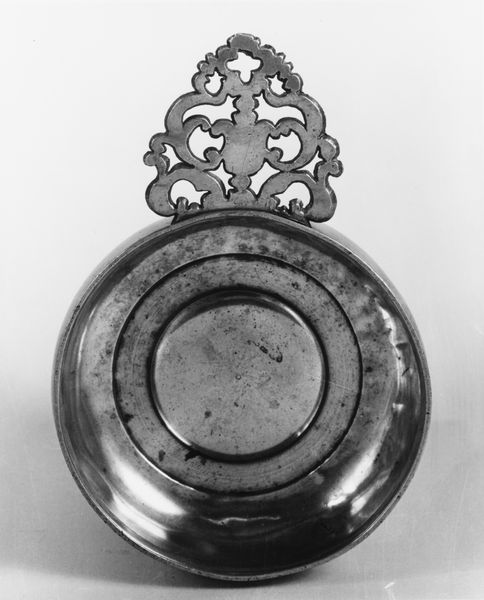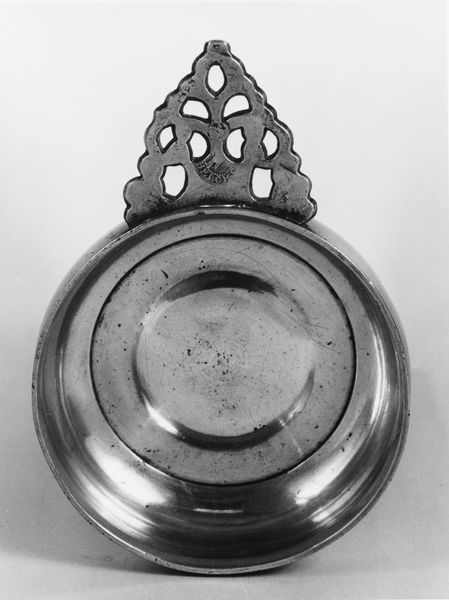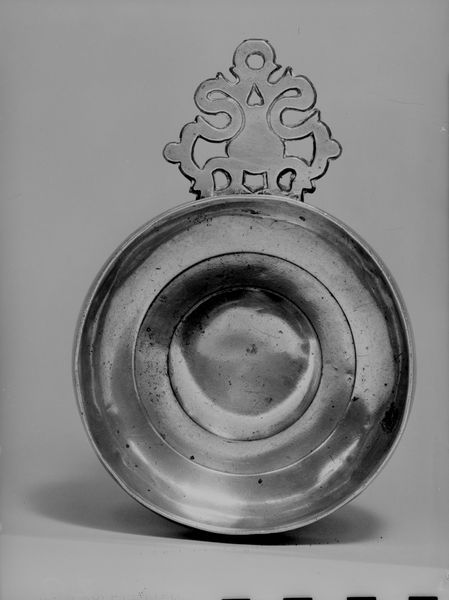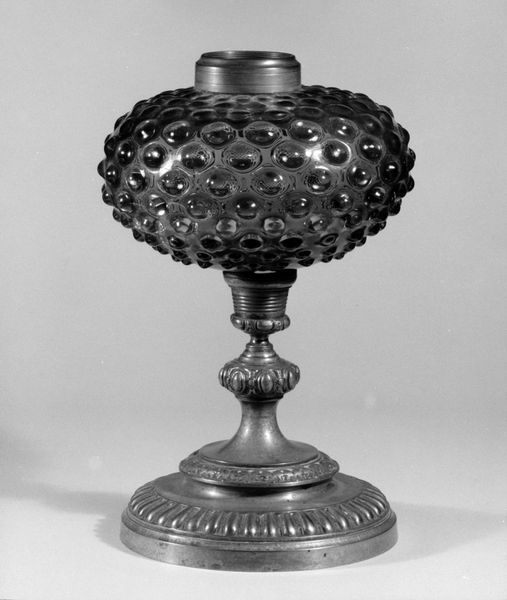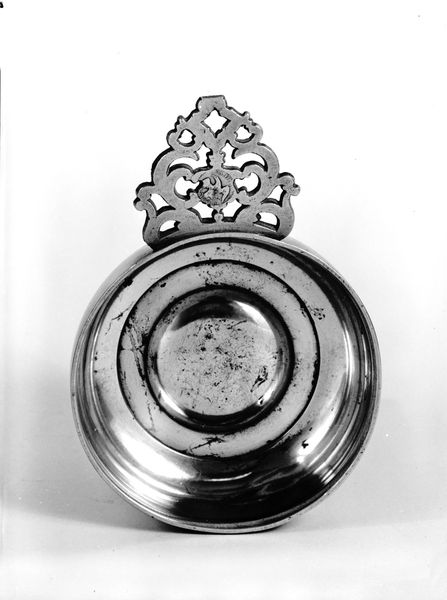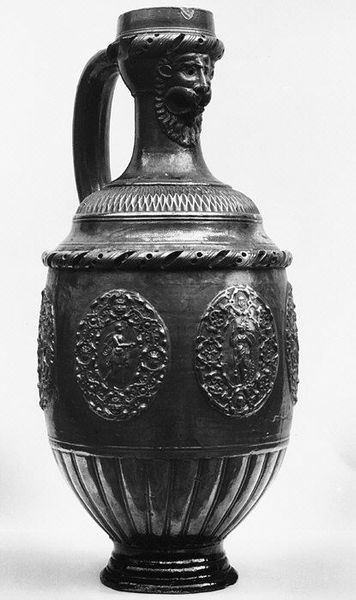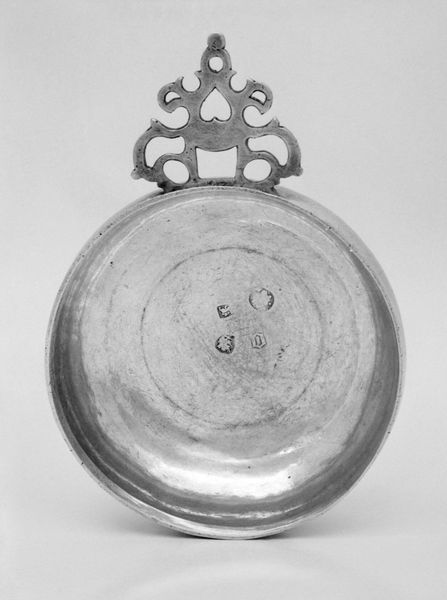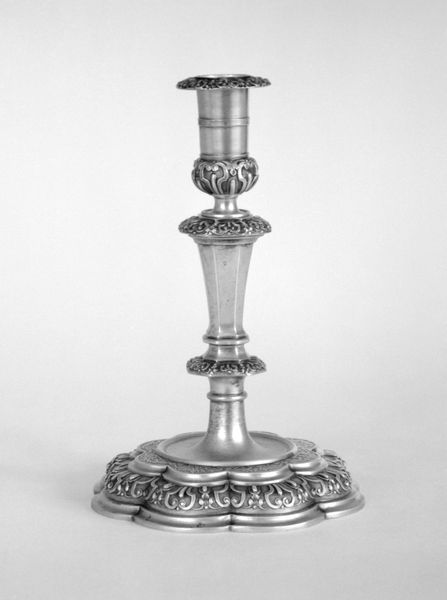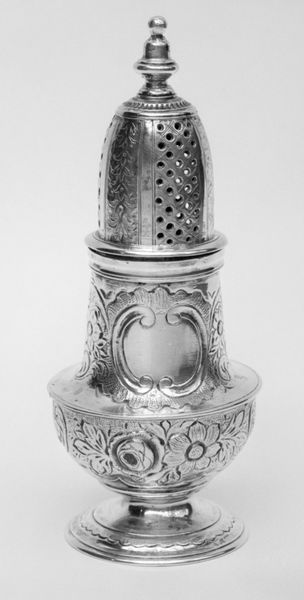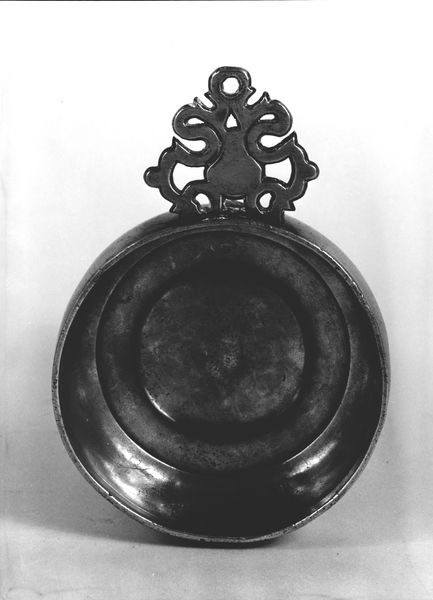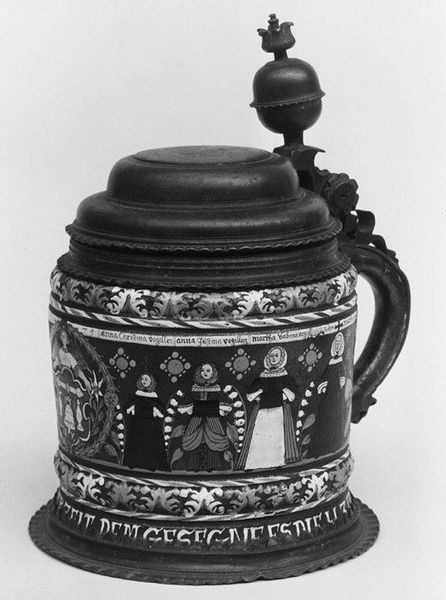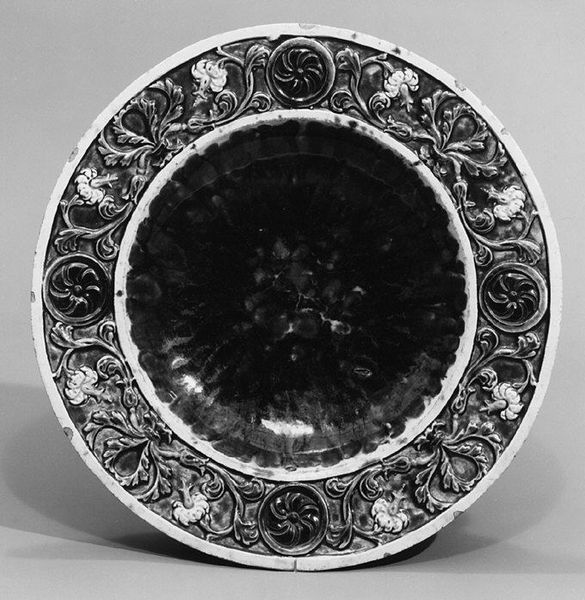
metal, sculpture
#
neoclacissism
#
metal
#
sculpture
#
form
#
geometric
#
sculpture
#
decorative-art
Dimensions: 1 5/8 x 7 1/8 x 5 in. (4.1 x 18.1 x 12.7 cm)
Copyright: Public Domain
This porringer was crafted by William Billings in the late 18th or early 19th century. The material is pewter, and the shape immediately strikes us: a deep, circular bowl with a highly stylized, almost baroque handle. Consider the composition: the bowl, defined by concentric circles, directs the eye inward, inviting contemplation of the void within. The handle, in contrast, projects upward. It is formed of openwork curves that dance across the negative space they define. What can we say about this interplay of form and function? The porringer is designed to hold, to contain. Yet the handle, with its extravagant embellishments, resists utility. It asserts a purely aesthetic dimension. Perhaps Billings is suggesting a dialogue between the practical and the ornamental. The reflective surface of the pewter further complicates this dynamic. As light plays across the metal, the porringer transcends its material reality. The porringer becomes a symbol of cultural exchange, bearing witness to a moment when artisanal craft met the broader currents of philosophical and aesthetic thought.
Comments
No comments
Be the first to comment and join the conversation on the ultimate creative platform.
